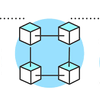Understanding the Difference Between a GET Request and a POST Request
When we interact with websites or web applications, we often hear about GET and POST requests. Both of these are HTTP methods that are used to retrieve and send information to web servers. However, there are some key differences between the two. In this article, we will explore the differences between GET and POST requests.
The Basics
HTTP (Hypertext Transfer Protocol) is a protocol used for communication between web servers and clients. GET and POST are two of the HTTP methods that are used to request and send data.
GET Requests
GET requests are used to retrieve data from a web server. When a GET request is made, the client sends a request to the server to retrieve a specific resource (such as a webpage or an image). The data is sent in the URL of the request, and the response from the server is usually in the form of an HTML page.
POST Requests
POST requests are used to send data to a web server to create or update a resource. When a POST request is made, the client sends data to the server in the body of the request. This data can be in many different formats, such as JSON or XML, and is used to create or update resources on the server.
Differences between GET and POST Requests
There are several key differences between GET and POST requests:
Data Size
GET requests are limited in the amount of data that can be sent. The data is sent in the URL of the request, and URLs have a maximum length. This means that GET requests are generally used for small amounts of data, such as retrieving a webpage or an image.
POST requests, on the other hand, can send large amounts of data. The data is sent in the body of the request, which has no size limitations. This makes POST requests more suitable for sending large amounts of data, such as when creating or updating a resource on a server.
Security
GET requests are less secure than POST requests. This is because the data is sent in the URL of the request, which can be intercepted and read by anyone who has access to the network. This means that sensitive information, such as passwords or credit card numbers, should not be sent using GET requests.
POST requests, on the other hand, are more secure because the data is sent in the body of the request, which is not visible in the URL. This means that sensitive information can be sent securely using POST requests.
Caching
GET requests can be cached by web browsers and proxy servers. This means that if the same GET request is made multiple times, the browser or proxy server can use the cached response instead of requesting the data from the server again. This can improve performance and reduce network traffic.
POST requests, on the other hand, cannot be cached. This is because POST requests are used to create or update resources on the server, and caching the response could result in outdated data being displayed to the user.
Conclusion
In conclusion, GET and POST requests are two of the HTTP methods that are used to retrieve and send data to web servers. GET requests are used to retrieve data, while POST requests are used to send data to create or update resources on the server. GET requests are less secure than POST requests and can be cached, while POST requests are more secure and cannot be cached. Understanding the differences between GET and POST requests is important for web developers and anyone who interacts with websites or web applications.
Outlook
As technology continues to advance, we can expect to see new and improved methods of retrieving and sending data to web servers. However, GET and POST requests will likely continue to be used for the foreseeable future. It is important to stay up-to-date with the latest trends and best practices in web development to ensure that

When it comes to web communication, two of the most commonly used protocols are HTTP and WebSocket. While they share some similarities, they also have significant differences that set them apart from

When browsing the internet, you may have noticed that some websites have "http" in their URL while others have "https". These are two different protocols that websites use to transmit data between the

When we interact with websites or web applications, we often hear about GET and POST requests. Both of these are HTTP methods that are used to retrieve and send information to web servers. However, th
